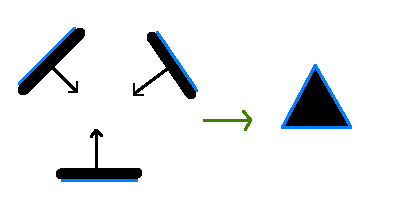|
MercuryDPM
Alpha
|
|
MercuryDPM
Alpha
|
Walls are crucial in most of our problem setups and hence we have a variety of walls to suit the needs of our users.

A standard wall is a plane defined as {x: normal*x=position}, with normal being the outward unit normal vector of the wall. A particle touches a standard wall if position-normal*x<=radius. Given the normal, a wall can be placed at any given position.
The black strip denotes the inner side of the wall. The particles interact with the wall along the blue strip.

Finite wall is basically a set of infinite walls or A finite wall is convex polygon defined by a set of normals normal_i and positions position_i. For example, to create a polygonal obstacle (in 2D or 3D), we consider the a set of infinite walls and create the obstacle as an intersection of all the infinite walls. See above figure corresponding to finite walls.